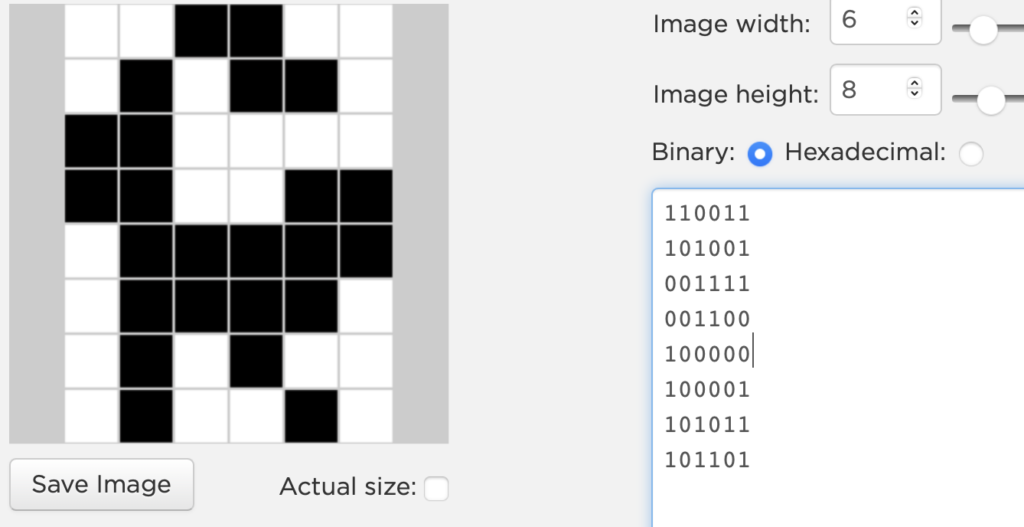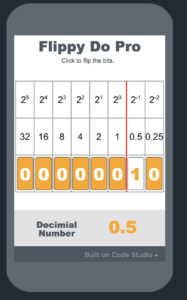by admin | Apr 1, 2010 | C / C#, Computer Science, Program Code, Programming
The following is based on my interpretation. Yours might be different to mine.


The goal here is for you to realize that, depending on the situation, we may want to take readings more frequently. Today, we’re actually learning about how images are represented in computers, but let’s keep in mind these ideas about how often to take a reading or measurement.

Each item in the list represents a non-denominational holiday
01 01 – New Years Eve
26 01 – Republic Day
15 08 – Independence Day
02 10 – Gandhi Jayanti
The format of the list is two numbers
This list happens throughout the year and repeats every year

With all of the bits flipped to 1, the largest number you can make is 63.75. Note that this is smaller than the largest you can make with a traditional Flippy Do, which is 255. This is because we have shifted two bits to represent smaller numbers (0.5 & 0.25)
The only change values you can make with this Flippy Do Pro are 0.25, 0.50, and 0.75.
Can you make the binary number for 0.39 (decimal)? No!
Roundoff error occurs when an exact value cannot be made with available place values


The next value, in binary: 000000.10
decimal (Base 10) equivalent = 0.50

BINARY VALUE = 000000.01
DECIMAL VALUE = 0.25